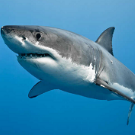The Good The Bad & The Ugly - What makes a photograph?
-
Recently Browsing 0 members
- No registered users viewing this page.
-
Topics
-
-
Popular Contributors
-
-
Latest posts...
-
33
-
1,434
What Movies or TV shows are you watching (2025)
My absolutely favorites of the past years: Yellowstone Hells on Wheels Big Bang Theory ... not everybody gets it, watch from 1st Episode to get it. Two and a Half men until the Kutscher Diot came for Charly Married with children, for sure STAR TREK - Strange New Worlds The Orville - Star Trek a bit different atm i am watching LAUDERMILK .... nice series about an Ex Alcoholic speaking things out and just giving two fxxx about what ppl think about it 😎 -
137
Epstein Coverup Continues
There are plenty of photographs, video footage and it's associated audio clips which all indicate that Mr Trump, if not an actual participant in Epstein's activities was certainly party to them. The anouncement that there is no "client list", after Ms Bondi had previously stated that it was "on her desk" is about as credible as the conclusion that Epstein committed suicide in his cell whilston remand. The whole business stinks to high heaven. -
62
-
88
Health Rabies Deaths Triple in Thailand: Urgent Alerts Issued
Mass killing of possibly rabid dogs is MERCY not cruelty. Pu them out of their misery. -
76
USA Measles Resurgence in the U.S. Reaches 33-Year High Amid Vaccine Hesitancy
How does a manual labourer with no formal education, training, or clinical experience like you have so much knowledge in virology and infectious disease? How many infected children have you successfully treated?
-
-
Popular in The Pub









Recommended Posts
Create an account or sign in to comment
You need to be a member in order to leave a comment
Create an account
Sign up for a new account in our community. It's easy!
Register a new accountSign in
Already have an account? Sign in here.
Sign In Now